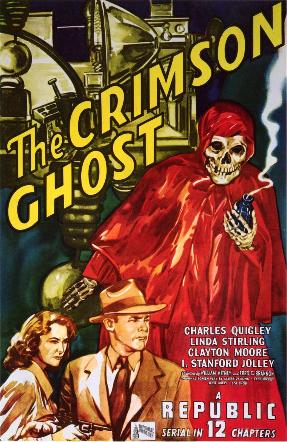I’ve actually already posted links to a few of these over on the DurnMoose Movies Facebook page, but I figured I’d go ahead and do an actual round-up of them for those of you who haven’t yet “liked” the page – and again, if you’re one of those who haven’t, why not? It really is the best way to keep up with what’s going on here, and quite often I’ll also post these kind of links to articles that I haven’t written myself but find interesting there – and include a few more.
ITEM! The “Screwball Comedy” has been one of my favorite movie genres ever since I was first introduced to it by the classic “His Girl Friday”. Here’s a fun article from Flavorwire that outlines a number of the typical characters that populate these movies, and also includes some terrific examples of movies that you can find them in.
ITEM! One of the more interesting ideas that I found in this article is that some of the “found footage” movies that have become popular over recent years, such as The Blair Witch Project could also fall into this category. I hadn’t really considered that, but yeah, I guess it’s true.
ITEM! As someone who writes about what I’ve always considered “Pop Culture” and enjoys and writes about what I suppose could be considered both “high” and “low” culture, I found this article on the conflict that has often broken out between the two at times quite disparate camps rather fascinating.
ITEM! Since I’ve covered a couple of his movies recently in my continuing journey through the Sight and Sound Top 250 Movies and also just finished a complete re-watch of Twin Peaks, I found these insights from film maker David Lynch very interesting.
ITEM! For those interested in the ongoing war between copyright holders and ISPs over what exactly the term “copyright infringement” means and just what the responsibilities of ISPs are towards those who are accused (that’s accused, not convicted) of infringement are, this lawsuit should be not only of interest, but deep concern.
ITEM! Here’s an intriguing audiovisual analysis/exploration by Kevin B. Lee of the development of director Paul Thomas Anderson’s use of steadicam and the tracking shot through five different scenes from his movies.
ITEM! LOLA brings us an article examining a topic that I’ve only relatively recently (as in, say, the past six or seven years or so) become more aware of and intrigued by: the importance of European film makers and immigrants (especially, in this case, German emigres) on the development of what we consider to be American films,but which actually have as much to do with where they have come from as where they eventually settled, with a special focus on the films of the 1920s through the 1940s. It’s long, but definitely a worthwhile read for those interested in the history of films from that time period.
ITEM! I’m not going to link to a specific article here, but I do want to note that the latest issue of the online Senses of Cinema journal is now out. Yes, this is one of those “Cinema Journals” that can sometimes be far too pretentious for the more casual reader, but there are always at least one or two articles that I find worth taking the time to read.
ITEM! Volume 18 Issues 6-7 of OffScreen is also now online (I’m using the singular even though the numbering seems plural because it appears as a singular issue covering two months, thus the odd numbering). Again, I haven’t had a lot of time yet to fully delve into it, but since the subtopic is “Issues of Gender in the Horror Genre” I suspect there’s going to be some interesting reading.
ITEM! I was only recently led to the Reel Fanatics podcast through a link from David Borwell’s site which connected to his recent discussion there on narrative and storytelling, but I look forward to checking out other episodes as well.
ITEM! Speaking of David Bordwell, his Observations on Film Art website has turned up a couple of articles that have caught my eye recently, especially this one on what he calls “forking path” narratives that explore the concept of the consequences of characters making different choices during the course of a film and how that would have changed the outcome of them, and this one on what are generally called “Oscar Bait” movies.
ITEM! Moving away from the more academic side of things, Gizmodo has a look at the newly redesigned Oscars website and some of the things that can be found there.
ITEM! Tiny Zhou comes through yet again with an audiovisual exploration of the camera work of David Fincher and the things he does – and doesn’t do – to make the most of “small scenes”.
ITEM! The question of what makes a movie a “film noir” is one that has been addressed many times and in many ways. Here’s yet another audiovisual essay on the topic.
LAST ITEM! Finally, for those who may have missed the link earlier in the week, most of you who have been around for awhile know that I’m a big fan of Old Time Radio, and Earbud Theater is working hard to bring back the spirit of those shows with a series of what they call “podplays”. Go give them a listen!
Related articles
- Weekly Links: Ninja Turtle Horror Movie References & The Dark Cinema of David Fincher (jarviscity.com)
- 10 Amazing Unmade David Fincher Films (whatculture.com)






















